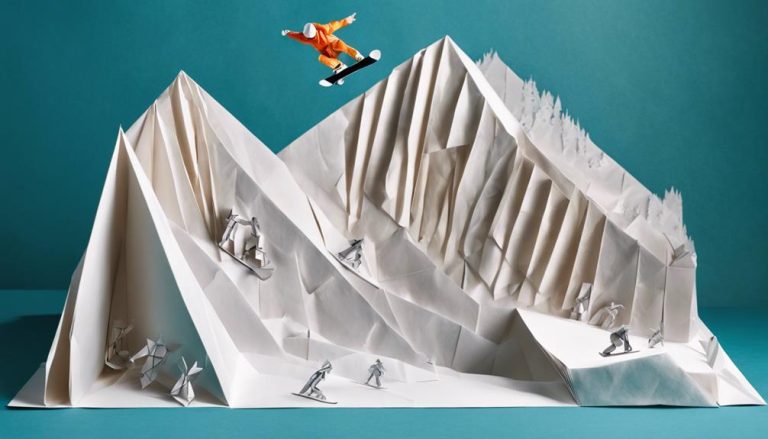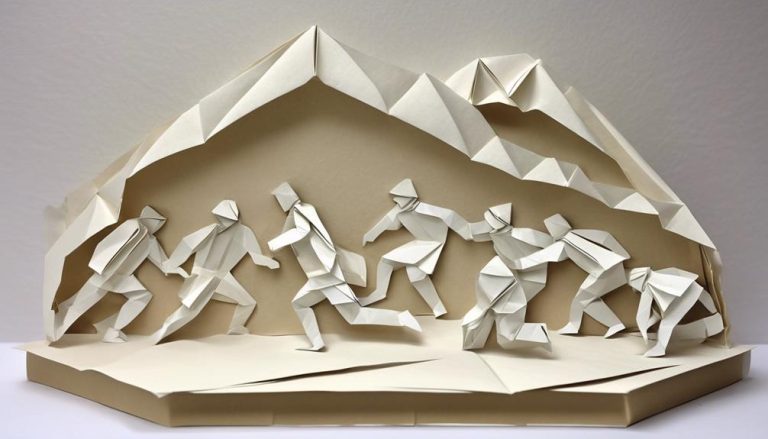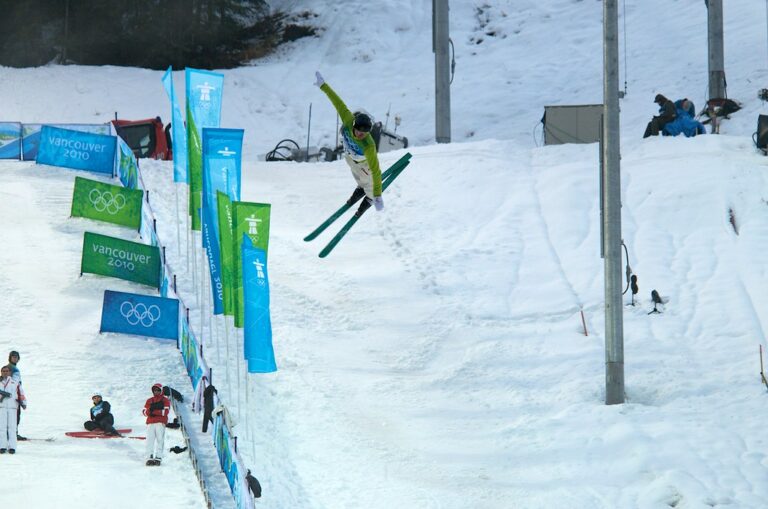General Rules of Snow Skiing
When hitting the slopes, remember the saying "Safety first." As you slide down the powdery terrain, it's crucial to follow some general rules to ensure a smooth and enjoyable ski session. From gearing up with the proper equipment to being mindful of others sharing the mountain, these guidelines will not only keep you safe but also enhance your overall skiing experience. So, grab your gear and get ready to carve your way through the snow with confidence and skill.
Proper Equipment
When skiing, it is essential to ensure you have the proper equipment to maintain safety and enhance your experience on the slopes. Gear maintenance plays a crucial role in skiing safety. Regularly check your skis or snowboard for any damages or needed repairs to prevent accidents on the mountain. Properly fitting boots are also vital. Ill-fitting boots can cause discomfort and affect your control while skiing. Make sure your boots provide the right balance of support and flexibility.
Helmet safety is non-negotiable. Always wear a helmet to protect yourself from head injuries in case of falls or collisions. Remember to replace your helmet if it has sustained any impact, as it may have invisible damages. Additionally, keep an eye on goggle fogging. Foggy goggles can obstruct your vision, increasing the risk of accidents. Consider using anti-fogging solutions or ensuring proper ventilation to prevent fog buildup and maintain clear visibility while skiing.
Stay in Control
To ensure you stay in control while skiing, it's crucial to focus on your balance and technique, speed management, and body positioning. By mastering these key points, you can navigate the slopes with confidence and precision. Remember to always prioritize safety and control to enhance your skiing experience.
Balance and Technique
Maintaining proper balance and technique while snow skiing is crucial for staying in control on the slopes. To achieve this, focus on the following:
- Balance: Keep your weight evenly distributed between both skis to prevent tipping over.
- Fluidity Techniques: Practice smooth transitions between turns to maintain momentum and control.
- Body Alignment and Weight Distribution: Align your body downhill, with knees slightly bent, and distribute weight slightly forward to engage the edges of your skis effectively.
Speed Management
Proper speed management is essential for maintaining control while snow skiing. To control your speed effectively, utilize techniques such as making rhythmic, controlled turns and employing the "pizza" or "wedge" position to slow down. By mastering speed control methods, you can navigate slopes with confidence and safety. It is crucial to remain aware of the terrain and select slopes that match your skill level to avoid excessive speed. Adjust your speed based on the slope's steepness and conditions to ski comfortably and safely. Remember, speed management is not only about going slower but also about finding the right balance between control and momentum. With practice and terrain awareness, you can ski at a speed that keeps you in control and enjoying the thrill of the slopes.
Body Positioning
For effective control while snow skiing, ensure your body positioning is aligned and balanced to stay in control of your movements down the slopes. To achieve this, focus on:
- Proper Alignment: Keep your shoulders, hips, and knees in alignment with each other to maintain stability and control. Imagine your body as a straight line pointing in the direction you want to go.
- Weight Distribution: Distribute your weight evenly between both skis to prevent tipping over or losing control. Feel the snow under your skis and adjust your weight accordingly.
- Flexibility: Stay flexible in your ankles, knees, and hips to absorb bumps and adjust to changes in terrain. Flexing your joints allows for fluid movements and quick adjustments.
Yield to Others
When skiing, it's crucial to prioritize safety by yielding to others on the slopes. By respecting fellow skiers and giving them the right of way, you contribute to a safer skiing environment for everyone. Remember to be aware of your surroundings and always yield to those in need to ensure a smooth and enjoyable skiing experience.
Safety First
Ensure you always prioritize safety on the slopes by yielding to others around you. When skiing, safety is paramount to avoid accidents and injuries. Here are three key points to keep in mind:
- Maintain a Safe Distance: Always keep a safe distance from other skiers to prevent collisions. This allows you and others to maneuver comfortably without risking accidents.
- Observe Right of Way: Be mindful of the skier's downhill right of way. Yield to those below you and make your actions predictable to prevent confusion and accidents.
- Communicate Clearly: Use verbal or non-verbal cues to communicate your intentions with other skiers. This helps in coordinating movements and avoiding dangerous situations on the slopes.
Respect Fellow Skiers
Prioritize the safety and well-being of fellow skiers by yielding to others on the slopes. Showing respect and consideration for your fellow skiers is crucial for building positive relationships on the mountain. When approaching a slower skier or someone who has fallen, yield the right of way and give them plenty of space to recover or continue safely. This simple act not only demonstrates your respect for others' skiing experiences but also contributes to a harmonious skiing environment. Additionally, when merging onto a trail or overtaking another skier, always yield to those in front of you to prevent accidents and promote a sense of camaraderie among skiers. Remember, by respecting your fellow skiers, you contribute to a more enjoyable and safe skiing experience for everyone.
Know the Skier's Responsibility Code
Familiarize yourself with the Skier's Responsibility Code before hitting the slopes to ensure a safe and enjoyable skiing experience. Understanding the code not only enhances your safety but also promotes a harmonious environment on the mountain. Here are three key aspects of the code to keep in mind:
- Control Your Speed and Skiing: Always ski in control and adapt your speed to the conditions and traffic on the slopes. This not only keeps you safe but also helps prevent accidents with other skiers around you.
- Stay in Your Lane: When skiing, maintain awareness of your surroundings and avoid sudden movements that can startle or endanger other skiers. Respect the space of fellow skiers and ski within your limits.
- Assist in Case of Accidents: If you witness an accident on the slopes, it's your responsibility to assist however you can. Alert ski patrol or provide aid if you're trained to do so, ensuring the safety and well-being of everyone on the mountain.
Be Aware of Your Surroundings
When skiing, it is crucial to maintain constant awareness of your surroundings to ensure a safe and enjoyable experience on the slopes. Be aware of other skiers and snowboarders around you, as well as any potential obstacles or changes in terrain. Stay focused on the trail ahead to anticipate any upcoming challenges and react accordingly.
To enhance your awareness, make sure to regularly check over your shoulder before merging onto a new trail or making a turn. This simple action can prevent collisions and keep you and others safe. Additionally, be mindful of signs indicating trail difficulty levels and any warnings about potential hazards.
It's also important to stay alert to your surroundings in case of changing weather conditions that could impact visibility or snow quality. By being aware and staying focused, you not only protect yourself but also contribute to a harmonious skiing experience for everyone on the mountain. Remember, a vigilant skier is a responsible skier.
Respect Ski Area Boundaries
Respect ski area boundaries by adhering to designated limits and markers to ensure safety for yourself and others on the slopes. Ski resorts are carefully designed to provide a safe and enjoyable experience for all visitors. Here are three essential tips to help you navigate ski area boundaries effectively:
- Boundary Markers: Pay close attention to boundary signs and markers placed around the ski area. These indicators are there to guide you and prevent you from accidentally venturing into unsafe terrain.
- Off-Piste Skiing: While the temptation to explore off-piste areas may be strong, it is crucial to remember that these areas are often unpatrolled and may pose significant risks. Stick to marked trails to ensure your safety.
- Safety Precautions for Backcountry Exploration: If you are considering backcountry skiing, make sure to equip yourself with the necessary gear, knowledge, and skills. Always inform someone of your plans and be prepared for changing conditions.
Respecting ski area boundaries not only keeps you safe but also helps preserve the natural environment and ensures a positive experience for all skiers.
Be Prepared for Changing Conditions
Navigating changing weather conditions is crucial for ensuring your safety and enjoyment while skiing. Weather on the slopes can shift rapidly, so being prepared is key. Layering clothing is essential to regulate body temperature as conditions fluctuate. Start with a moisture-wicking base layer, add insulating layers for warmth, and top it off with a waterproof and windproof outer shell. This way, you can easily adjust your outfit to stay comfortable throughout the day.
In addition to layering, don't forget about eye protection. Goggles are vital for shielding your eyes from wind, snow, and harmful UV rays. Opt for goggles with interchangeable lenses to adapt to varying light conditions. Sun protection is equally important, even on overcast days. Apply sunscreen to exposed skin and wear a helmet to protect your head from both impacts and the sun.
Ski With a Buddy
Ensure your safety and enhance the skiing experience by always skiing with a buddy. Skiing with a companion not only adds to the fun but also provides an extra layer of safety on the slopes. Here are some skiing etiquette and safety precautions to keep in mind when hitting the slopes with a buddy:
- Stay in Visual Contact: Maintain a line of sight with your skiing buddy at all times. This ensures that you can assist each other in case of any emergencies or unexpected situations.
- Agree on Meeting Points: Before starting your descent, agree on specific meeting points along the way. This way, if you get separated, you can easily regroup without any confusion.
- Communicate Effectively: Use clear and concise communication with your buddy. Discuss your skiing plans, any potential risks, and signals you will use to communicate on the slopes.
Frequently Asked Questions
What Are Some Common Mistakes Beginners Make When Learning How to Snow Ski?
When starting to snow ski, common mistakes include not dressing in proper gear, like warm layers and goggles, and not mastering correct technique, such as bending your knees and leaning forward. Practice makes perfect!
How Can I Improve My Balance and Coordination While Skiing?
To enhance your balance and coordination while skiing, engage in balance drills and coordination exercises. Incorporate skiing techniques and maintain your equipment. Improving these skills will elevate your performance on the slopes.
Are There Any Specific Stretches or Warm-Up Exercises I Should Do Before Hitting the Slopes?
Before hitting the slopes, ensure proper hydration and nutrition. Incorporate stretches to improve flexibility and warm-up exercises to build strength. Engaging in these routines will help prevent injuries and enhance your skiing experience.
What Should I Do if I Get Lost or Separated From My Group While Skiing?
If you get lost skiing, remain calm. Follow emergency procedures, like staying put if safe. Use communication devices if available. Use mountain safety and survival techniques you've learned. Always ski with a buddy and have a meeting point.
How Can I Prevent Injuries While Skiing and What Should I Do if I Do Get Injured on the Slopes?
You're hitting the slopes, eager to shred. To keep safe, master skiing techniques. Remember safety precautions like wearing a helmet and staying within your skill level. If injured, seek help and follow the ski patrol's advice.






